Yoga For Teens:
Yoga for teens, can be a healthy addition to any workout routine. Providing teens another avenue for physical and mental health. From a physical perceptive, stretching vital areas of the body, and helping make strength gains. In addition, yoga can help improve posture, flexibility, and even balance.
Psychologically, yoga has shown to be beneficial for stress reduction, focus, mental clarity, sleep, and even to increase body awareness. These can be pivotal aspects of a developing teenager.
Furthermore, yoga can be a social opportunity. It can be a means for finding other like minding individuals that have their own health in mind. Being able to connect to a supportive environment at this crucial time in life is important.
Check out this video from one of our favorite ‘online’ yogis
Yoga For Teens Continued:
In it’s totality, yoga can help aide in bringing balance to your life. Indeed, for teenagers, but for all people. In modern day, yoga has transformed into more then just a practice encouraging spirituality. Many styles have evolved to better support people of all ages, demographics, and skill levels.
However, let’s continue on this fun journey and discuss additional yoga, for teenagers.
Bitilasana Marjaryasana, (Cat and Cow):
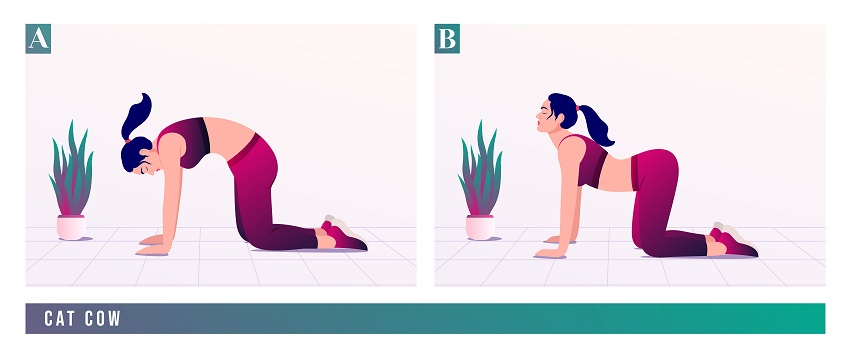
We start from a very simple position, but beneficial for the upper and lower portions of the back. This can be two separate poses. However, is cohesively one fluid motion when paired together.
Steps:
- Firstly, position your hands shoulder width, directly under your shoulders or slight above while on all fours.
- The movements should be made to coincide with the breath.
- While inhaling push your back down and look upwards, eyes attempting to focus on the ceiling. Your naval should come towards the floor, in cow.
- While exhaling, raise your back, creating a hump, and move your head down looking first at the mat then up to the navel. This is Cat pose.
The position of the Cat/Cow, can help strengthen and stretch the muscles in the back. Specifically, to help aide in lower back pain relief.
Consistency is key to anything we do in life. Yoga is no different. If you want results, practice consistency and practice with fine tuned focus and attention to the self.
Urdhva Mukha Svanasana, (Upward Facing-Down Dog):
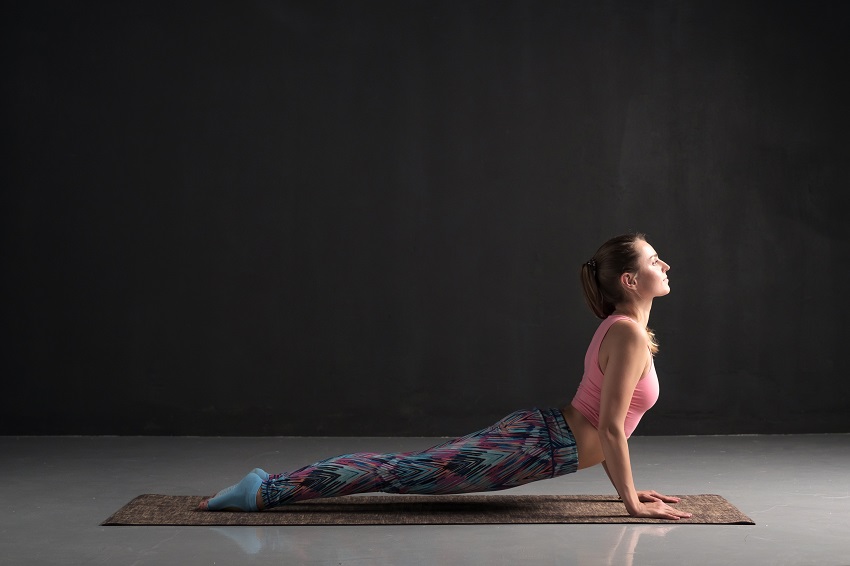
Although it is a simple back bend, Urdhva Mukha Svanasana is a posture that greatly benefits the spine. Specifically, helping it to find length, and flexibility, while helping strengthen the arms.
Also known as the upside-down dog, Urdhva Mukha Svanasana is fairly simple to perform.
Steps:
- Begin on your stomach. This can be on a mat.
- Slightly spread your legs with an opening equal to that of the hips or shoulders.
- Place your hands directly under your shoulders
- Then, push with your hands to lift your torso and pelvis.
- Attempt tp take your gaze upward.
- Keep the backs of your feet on the mat at all times. In addition, don’t spread your elbows too wide when lifting.
In everyday life we assume positions that stress the front of our body. This can be the way we sit in a chair or the way we lift an object. This places great stress on the spine, which is continually bent in these positions.
These stressful positions, in the long run, can lead to posture issues. Subsequently, leading to chronic back pain. It’s important to take steps (like yoga), to help prevent these issues “down the road”.
Uttanasana, (Standing Forward Bend):
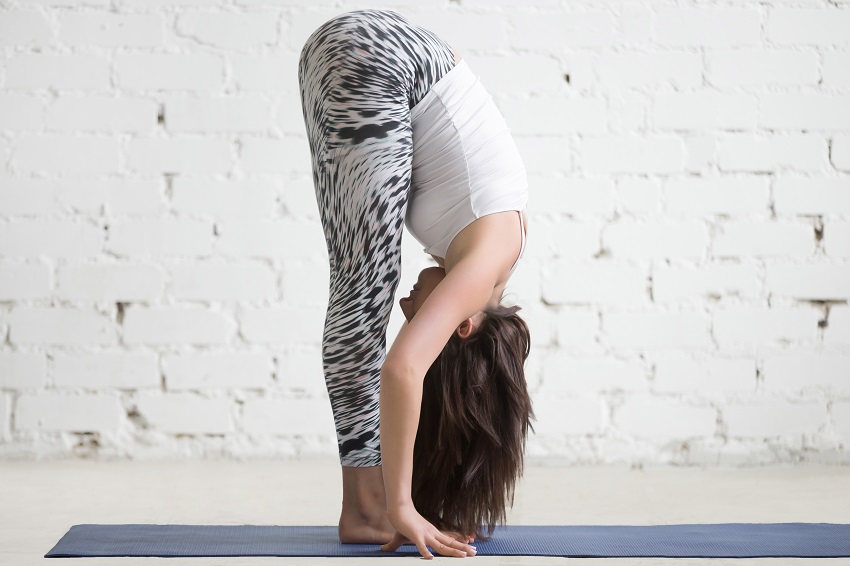
Another beginner friendly posture is Uttanasana. Although simple, can have a beneficial effect on the whole body. Oftentimes, Uttanasana is completed at the end of various heavy physical activities to stretch the muscles that have been subjected to stress.
Steps:
- Begin standing straight with your feet shoulder-width apart and parallel to each other.
- Once positioned, they must remain motionless like the roots of a tree: Uttanasana is in fact a rooting position, that is, in which you need to keep your feet firmly on the ground.
- Then, inhale and reach your arms overhead.
- Afterwards, exhale and hinge at the hips forwards, bringing your fingers towards your toes.
- Slightly bend at the knees if unable to reach the mat or comfort is an issue.
- Focus on relaxing the hamstrings.
- Let the hands and head hang, bringing the weight to the balls of your feet.
Vrksasana, (Tree Pose):
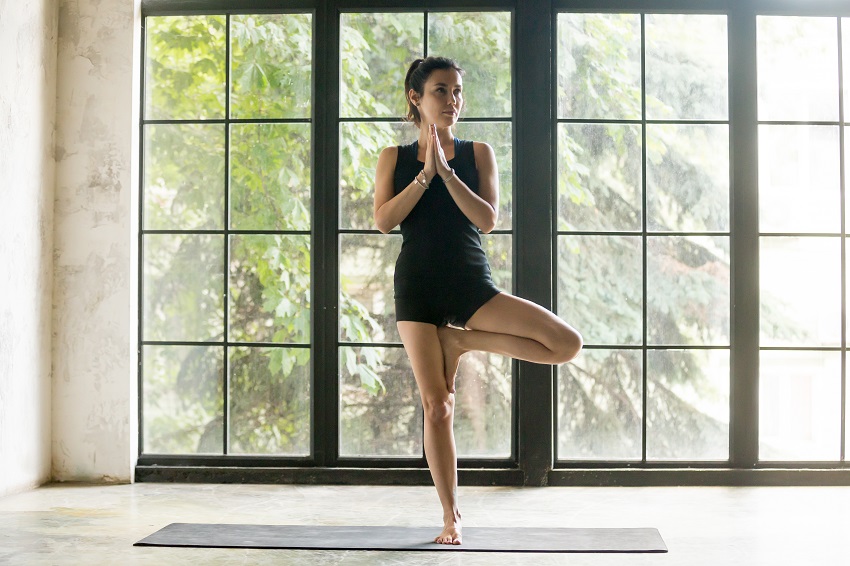
Vrksasana end position looks simple, but requires balance to be maintained. With regular exercise, it can become a routine position like any other.
Steps:
- Firstly, have your feet together on the mat.
- Begin shifting your weight to one leg, right or left – depending on which foot is your support.
- Lift the other leg and bring the foot up until the sole of the foot rests on the inner thigh, almost in the groin. Do not press into this area.
- Once your feet are in position, join the palms. You can hold them in front of your chest, or lift them upwards, above your head. Try to keep yourself straight and aligned.
Hold the position for a few breath cycles. Alternatively, you may hold this position for extended periods of time. Oftentimes, this is an asana dedicated to meditation, which can further enhance relaxation and free yourself of unneeded emotional stress.
Paripurna Navasana, (Boat Pose):
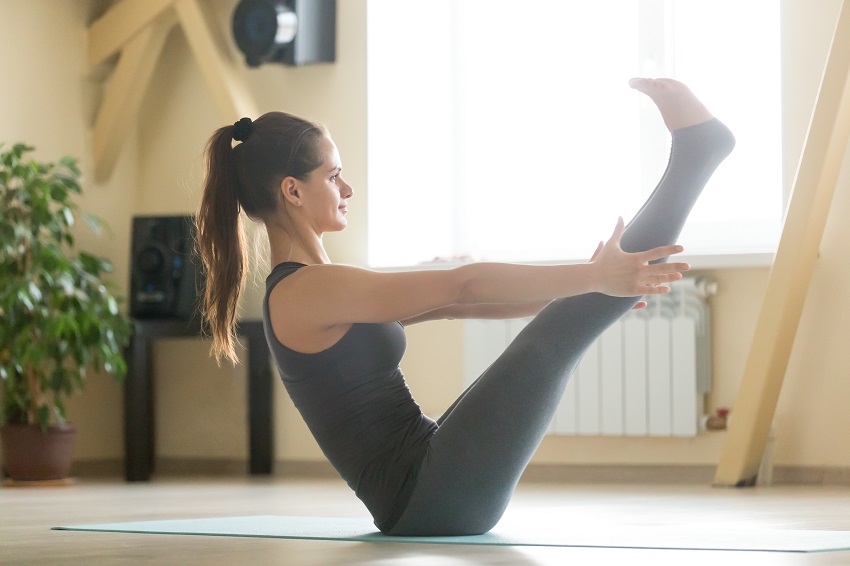
Here is a second position useful for balance and also core strength. Boat pose is an intermediate level asana. If you can’t complete it the first few times, don’t be discouraged. Attempt it on a daily basis.
Steps:
- Sit on your mat with your legs in front, knees bent.
- Grab the back of your knees/legs. Engage your core.
- Then, lift your feet off the mat, while keeping your knees bent.
- When your legs are in the air do not allow the back/spine to round, stay stright with your torso. Bring your arms forward at the level of your knees by straightening your legs.
- Balance this position for 5 breath cycles to start. In addition, lift the chest to help with balance.
Final Thoughts!
These asanas are prefect for teenagers. Whether your are new to yoga or have some experience, these poses focus on different elements. Strength, balance, flexibility, focus and mental clarity. All of these being important aspects to the growing and changing mind and body.
At first, you may not execute these yoga poses perfectly, and that’s okay! Calmly, safely, and over time you will learn to stretch, flex and bend more and more. Breathe into the posture and take one step at a time. A little goes long way!
References:
- https://osteopathic.org/what-is-osteopathic-medicine/benefits-of-yoga/#:~:text=Yoga’s%20incorporation%20of%20meditation%20and,Nevins.
- https://www.hopkinsmedicine.org/health/wellness-and-prevention/9-benefits-of-yoga
- https://kidshealth.org/en/teens/yoga.html




